PROVIDENCE — After spending seven years as an art director in New York City working for Fortune 500 brands, Felicia Neuhof grew increasingly frustrated with the unsustainable materials of her industry. She was constantly surrounded by plastic with a single-use lifecycle that would later become landfill waste.
When she moved to Providence to earn her master’s degree at the Rhode Island School of Design, she started eating a ton of shellfish and wondered what would eventually happen to the discarded shells, which were typically thrown away. That‘s when she set out on a mission. She started by experimenting with the shells being tossed into dumpsters behind her favorite restaurants, and began molding them into building materials.
Neuhof is now the founder and chief executive officer of Shellf Life, a Providence startup that transforms discarded seafood shells into innovative building materials. She’s also received international praise, winning the Terra Carta Design Lab, a global competition where she was able to place her material into the hands of King Charles III.
Q: What is Shellf Life and how does it work?
Neuhof: Shellf Life transforms discarded seafood shells into innovative building materials through a process I developed on my kitchen stove. We take what restaurants throw away — oyster, mussel, clam, crab, and scallop shells — and create architectural surfaces, furniture, and lighting with properties ranging from rigid to flexible to translucent. Since winning the Terra Carta Design Lab competition, I’ve been scaling operations at our 50 Sims facility in Providence.
In times of global supply chain uncertainty, Shellf Life offers a literally local concrete alternative that just makes sense — turning waste into valuable building materials through processes accessible to people from all backgrounds and skill levels.
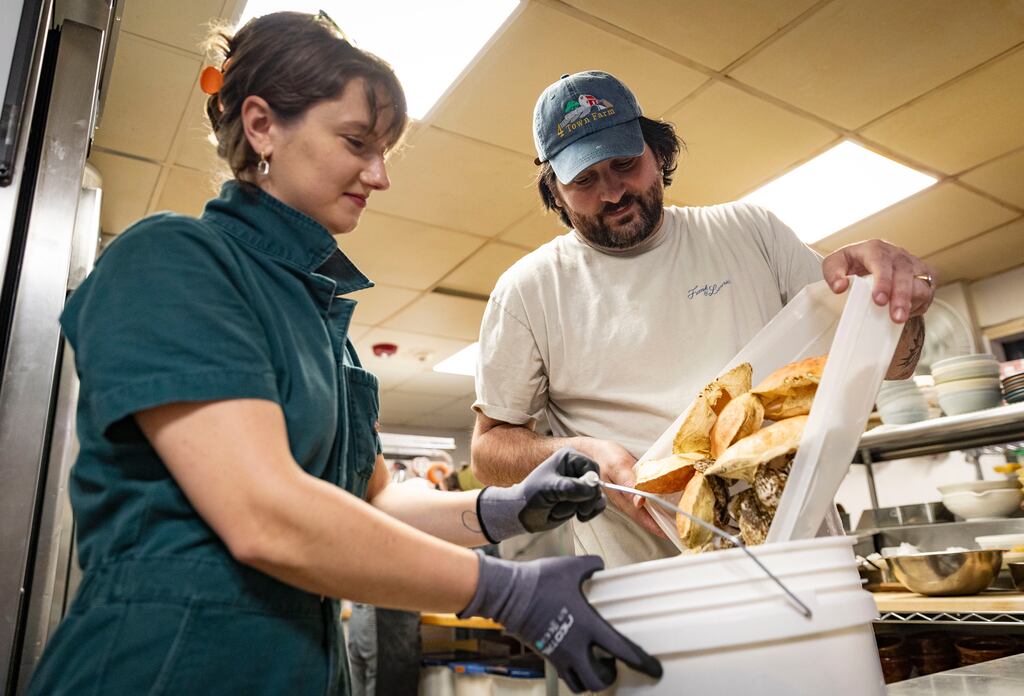
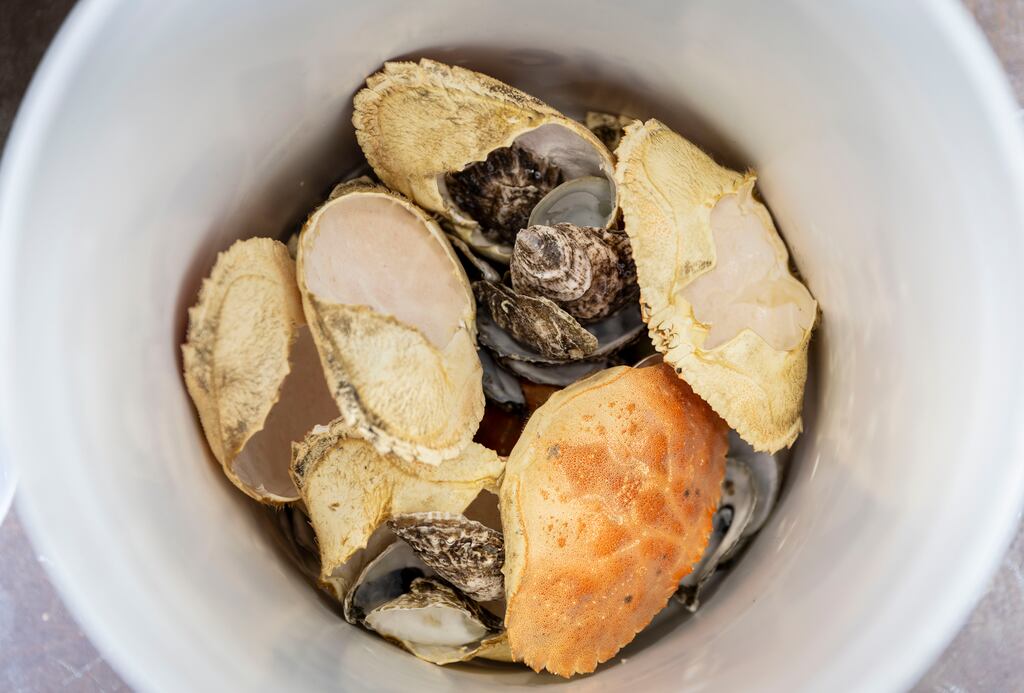
Q: How much seafood waste is there in New England?
The numbers are staggering. One Rhode Island shellfish processor alone generates 7 tons of shell waste weekly—that’s 728,000 pounds annually, enough material for 30,000 square feet of tiling. When combined with restaurant waste across New England, we’re looking at a tremendous resource: Rhode Island could produce enough material for 3,000 kitchen backsplashes annually, Massachusetts enough for 5,000 bathroom floors, Maine sufficient for 20,000 serving bowls that return to the restaurants supplying the shells, Connecticut enough for 1,500 countertops, New Hampshire enough for 1,000 shower surrounds, and even my home state of Vermont contributes enough for thousands of decorative elements. An order of a dozen oysters or plate of mussels creates enough shells for one 6-by-6-inch tile. Together, New England’s annual shell waste — currently headed to landfills — could tile nearly 300 homes every year. That‘s an entire neighborhood created from what restaurants are throwing away.
Q: What kind of materials are you creating? Furniture and fixtures? Raw materials?
Both. I create three product lines: furniture for residential and commercial settings, homeware like bowls and lighting, and architectural materials including tiles and surfaces. I’m also developing specialized applications for marine environments — working with City Island Oyster Reef to create alternatives to concrete currently used in aquaculture farms and coastal defense. My manufacturing process is simple — making a tile is as straightforward as following a recipe.
Q: Walk me through the process.
I collect shells from restaurant partners, clean and sanitize them, then crush them into a calibrated material. This is blended with my proprietary binder — much like following a recipe — and molded into form. During curing, the material actually captures CO2. At my facility at 50 Sims in Providence, I’ve scaled this process from my kitchen to a manufacturing microlab. I’ve secured a provisional patent on both the material composition and manufacturing method, which was an important step for commercialization. My goal has been to develop a system so refined that making a tile is as easy as flipping burgers, opening up manufacturing opportunities to anyone regardless of educational background. This simplicity makes our approach scalable within local economies.

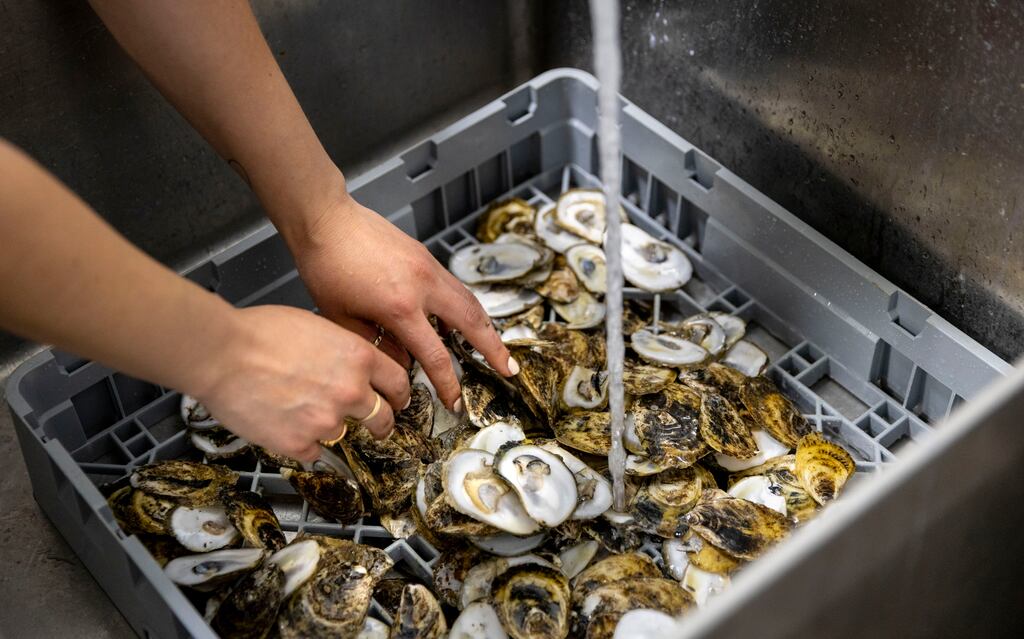
Q: What kind of seafood waste are you using?
I primarily use oyster, mussel, clam, and scallop shells — any bivalve shells typically tossed in restaurant dumpsters. Each brings unique qualities: oysters provide strength and texture, mussels offer beautiful color and luminosity, clams contribute creamy hues with flecks of purple, and scallops add structural pattern variability. Like a chef selecting ingredients, I blend these shells in various ratios to customize the material for specific applications.
Q: What was it like to meet King Charles, and develop Shellf Life as part of the Terra Carta Design Lab?
Meeting King Charles III was transformative. When I placed my kitchen-created material in his hands at Hampton Court Palace, his face lit up with genuine curiosity. Remarking on the texture and strength of the Shellf Life bowl, he asked thoughtful questions, revealing someone who truly understood the potential, calling the idea “genius.” What struck me most was seeing how Shellf Life made intuitive sense to everyone — from farmers and chefs to a King.
Q: How can restaurants, consumers, and others direct seafood waste to Shellf Life?
I’ve made it as simple as recycling. For restaurants, I provide collection buckets and regular pickup that fits into their existing workflow. I’ve already partnered with several Providence restaurants, including Frank & Lauries, Dune Brothers, and Hemenways. For individual consumers, I’m looking to establish community collection points. My goal is to make shell recycling as normal as glass or paper recycling.
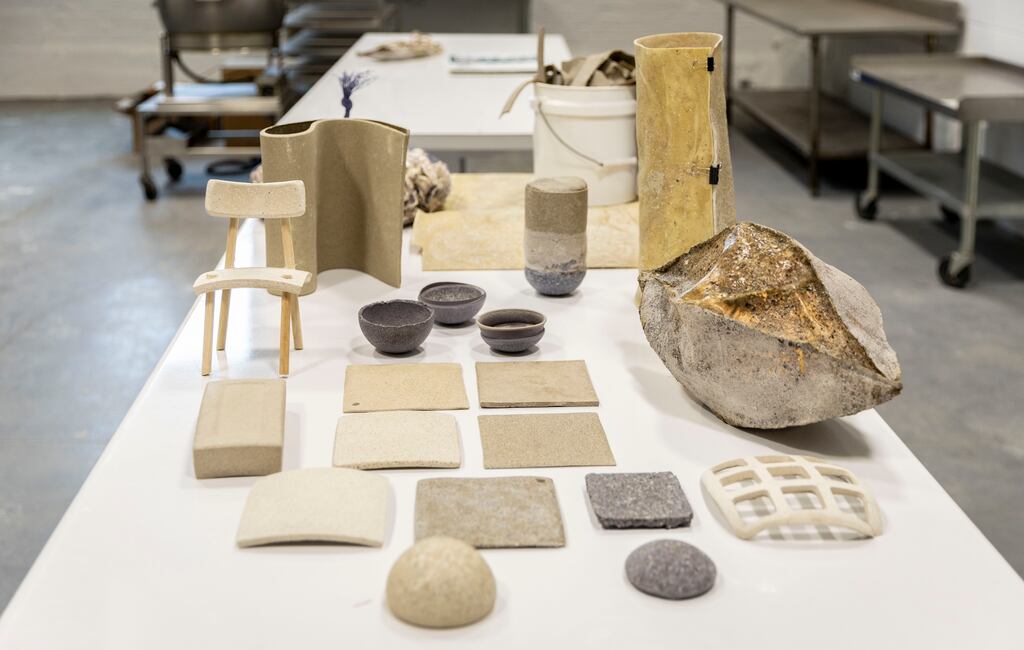
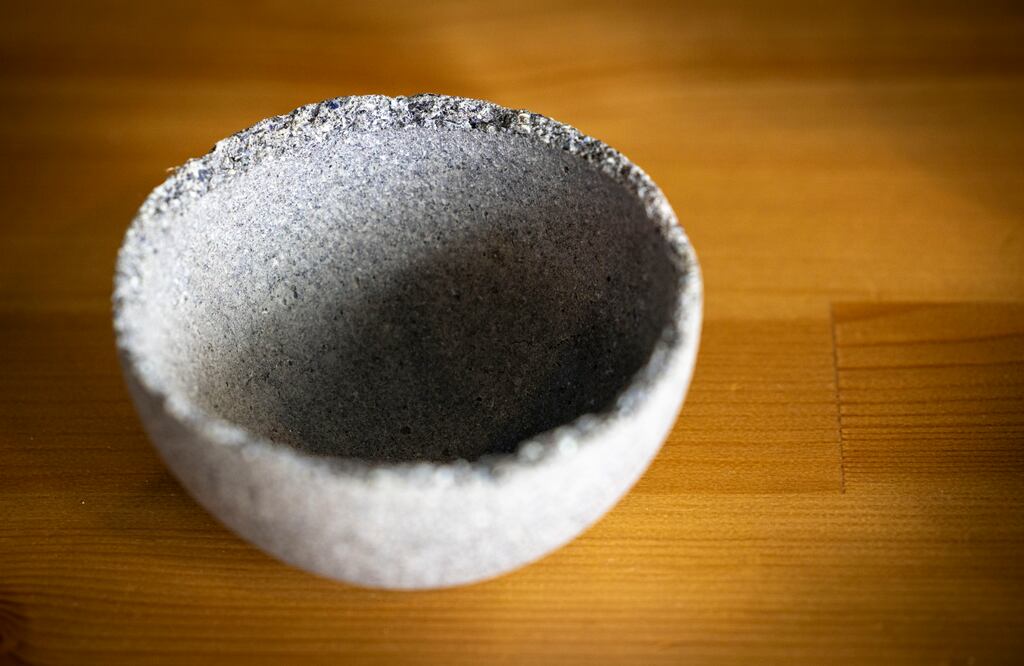
Q: Do you have any investors?
The Terra Carta award has funded my initial development. Now I’m seeking additional investment to support my two-year growth plan as I move from R&D into commercial production. I’m looking for partners who understand both the environmental opportunity and the social impact — investors who recognize the value of creating accessible manufacturing jobs while addressing environmental challenges.
Q: What are your goals for the next year?
This year is my R&D phase — implementing collection systems, refining manufacturing processes, and rigorously testing products in preparation for the 2026 commercial launch. Within five years, I aim to establish manufacturing microlabs in multiple coastal communities. In the next 10 years I hope to have locations spanning from Portland, Maine, to Portland, Oregon, and beyond. These microlabs will infuse cooking skillsets into manufacturing. My vision is a system so simple that making materials for buildings becomes as accessible as food preparation — democratizing manufacturing while creating resilient local supply chains.
This interview has been lightly edited for length and clarity.
The Boston Globe’s weekly Ocean State Innovators column features a Q&A with Rhode Island innovators who are starting new businesses and nonprofits, conducting groundbreaking research, and reshaping the state’s economy. Send tips and suggestions to reporter Alexa Gagosz at alexa.gagosz@globe.com.
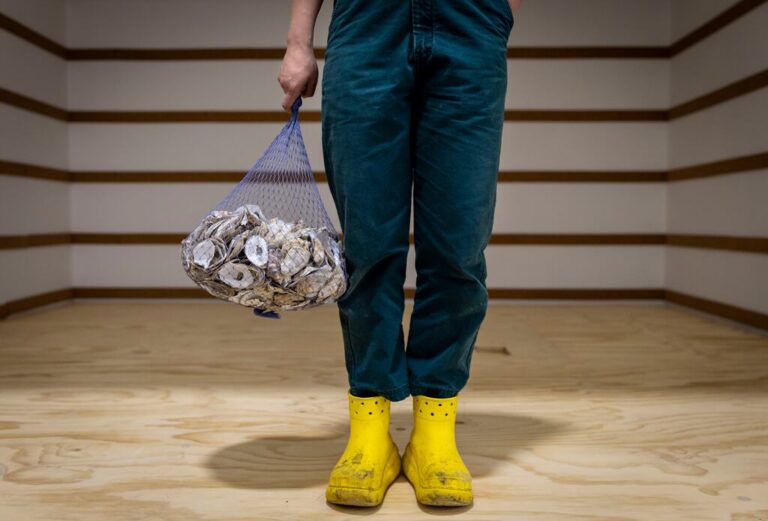

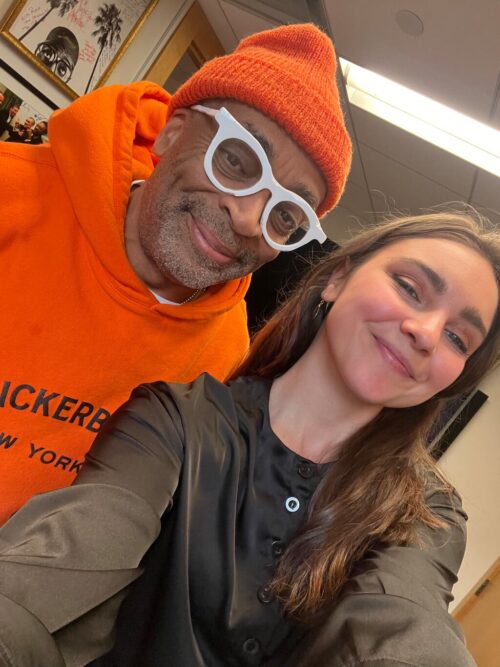
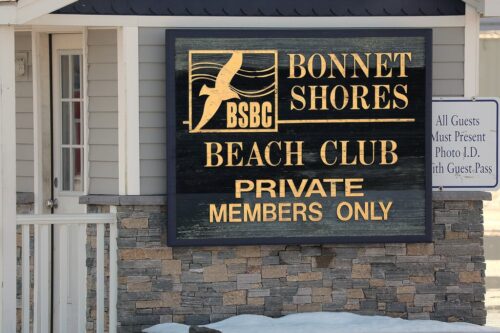
Comment count: